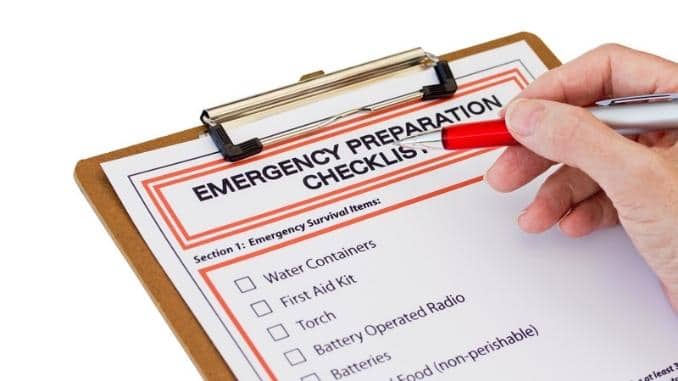Are you prepared for an emergency in your area? Here are the 10 Items to Include in Your Emergency Preparedness Kit.
It’s not something we usually think about, but it’s important. According to the National Centers for Environmental Information (NCEI), the U.S. has sustained 308 weather and climate disasters since 1980 where the overall damages/costs reached or exceeded $1 billion.
In 2021 alone, there have been 18 of these expensive weather/climate disasters at the time of this writing, including one drought, two flooding events, nine severe storm events, four tropical cyclones, one wildfire, and one winter storm. Overall, these events resulted in the deaths of 538 people.
And that’s not counting the other disasters that cost less than $1 billion, yet are still costly for residents, both personally and financially.
It takes only a few hours to put together an emergency kit that could be a life-saving item for you and your family. We tell you how.
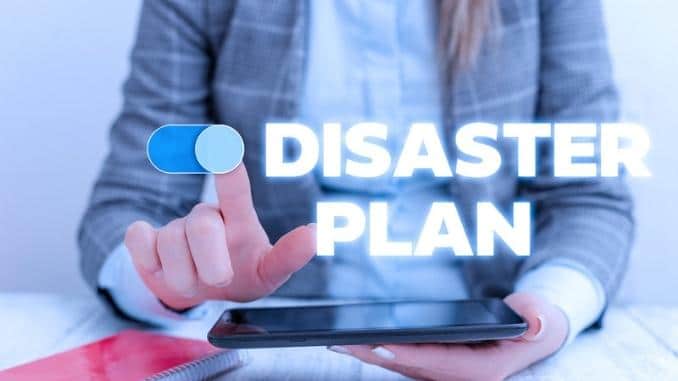
What is an Emergency Preparedness Kit?
An emergency preparedness kit is just what it sounds like: a kit to help you get through an emergency.
It's usually a collection of equipment, supplies, medications, and other items you might need in an emergency, such as a fire, tornado, hurricane, accident, power outage, or traumatic experience. The items are all kept in a box, bag, or another container that you can easily access.
The first 72 hours after an emergency are extremely important. It’s during this time that you treat wounds, find help, get your family to a safe place, and regroup. Help isn’t always available right away, so you may need to take care of yourselves for up to 3 days on your own.
An emergency preparedness kit must be available to use at a moment’s notice, yet capable of sitting on the shelf for many months or even years. It needs to be small enough to carry with you, but large enough to contain all the supplies you may need. It should also be durable so it lasts through various difficult situations.
By investing in a preparedness kit—or in more than one, if needed—you can enjoy peace of mind knowing that you and your loved ones will have the tools needed to survive until help arrives.
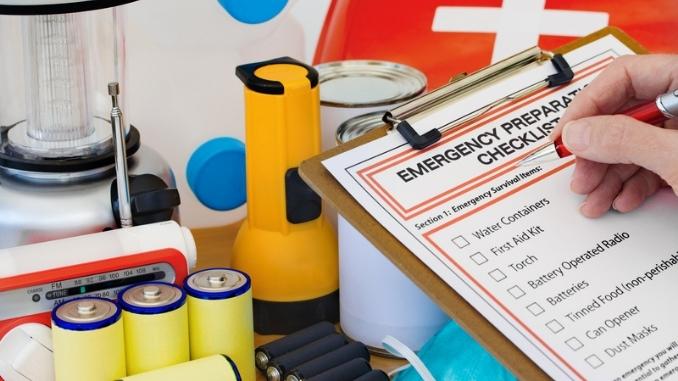
5 Questions to Ask Before Creating Your Emergency Preparedness Kit
When you’re thinking about creating an emergency preparedness kit, it helps to answer the following questions.
1. What kind of kit is this?
Though you may think of an emergency preparedness kit as a single item, there are many different types.
- Personal kit: This one is for one person and usually contains a minimum of 72 hours' worth of essential supplies.
- Home kit: This is for the entire family, including pets, and includes a minimum of up to 7 days worth of emergency supplies.
- Vehicle kit: This one is stored in your car, and should contain a minimum of 24 hours' worth of emergency supplies.
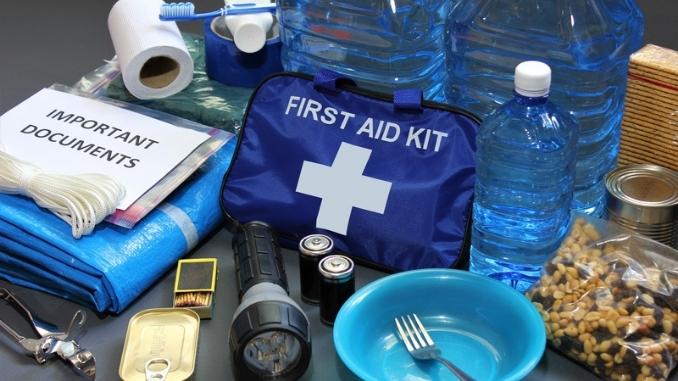
2. What sort of emergencies may occur in your area?
Consider where you live. What sort of natural disasters may affect your area? If you live in California, for example, an earthquake or wildfire is a possibility. If you live along a coastline, a hurricane or flood may be more of a concern. Knowing what sort of emergencies you may have to face can help you pack your kit with the items you’ll need.
If you’re not sure what disasters are common in your area, check the Red Cross’s list of “Common Disasters Across the U.S.” for more information. The Red Cross also has an emergency app that can help you stay informed.
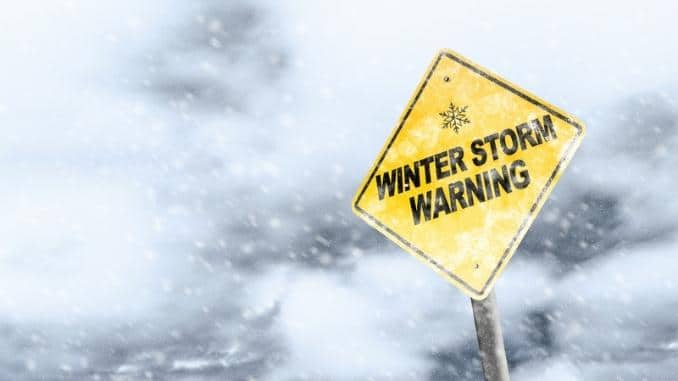
3. Who is this kit for?
Consider how many people—and pets—you may have to take care of in case of an emergency, and what those individuals may need. An emergency kit for a young, single adult, for instance, will look different from an emergency kit for a family with three little kids and a dog, or one for an older couple.
4. Where will you store the kit?
This is an important decision. You need to place the kit somewhere easily accessible, and where it can be easily taken with you if you have to leave quickly. It also needs to be kept cool and safe, so that the materials inside it will last. Consider various areas in your house or another location and choose one where the kit will be readily available, but where it will be out of reach of small children and pets.
5. What container will you use?
What will you put your emergency items in? You need a container that is durable, easy to carry, and able to be tightly closed. Plastic and metal containers usually work best, as they will last through various temperature and humidity conditions.
You also want to think about the size. The more people you are taking care of, the larger your kit will be. In that case, you may want to split it up into two or more containers. Another idea is to store everything in large plastic, covered trash cans, then leave several backpacks or suitcases nearby that you can load the supplies into for transport if needed.
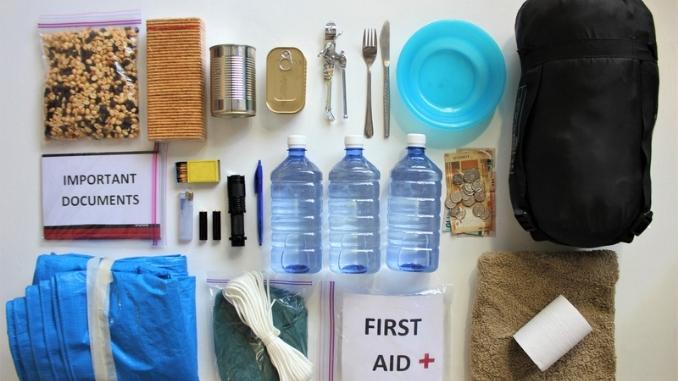
Items to Include in Your Emergency Preparedness Kit
Below, we have several suggestions for items you’ll want to include in your emergency kit. We’ll be talking about one made for your home, but you can adjust for both personal and vehicle kits.
1. Water
This is always the most important item to include in your kit, and one many people don’t think about. If you’re stuck in a natural disaster, it can impact your clean water supply. Plan to have at least one gallon of clean water per person per day, for both drinking and sanitation. Purchase gallons at your local grocery store, or wash and reuse empty soda and juice bottles.
If you may have to leave your home, consider getting a portable water filtering device, like the LifeStraw, which filters out bacteria and parasites from any water you may drink.
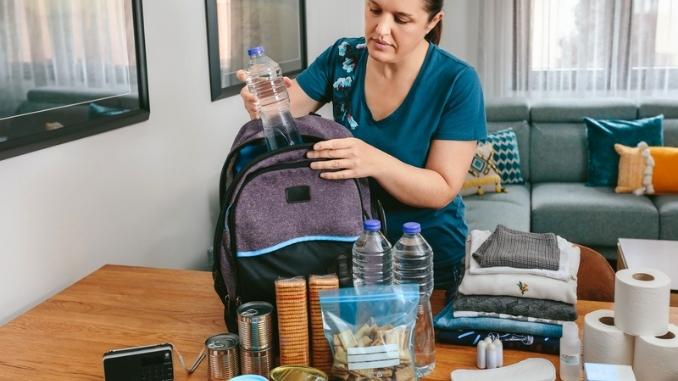
2. Food
It may be hard to imagine being without food, but when disaster strikes, trucks often can’t get into the area to deliver supplies, including food. You and your family may have to wait for days before you have access to food again.
In your emergency kit, include easy-to-eat items like energy bars, beef jerky, nuts, dried fruit, canned foods, dried potatoes and milk, and other items that you can easily and quickly consume. Don’t forget to put a can opener in your kit, as well as extra food for any of your beloved pets. Also include “comfort” foods, as they can help keep up morale. These may include cookies, hard candy, cereals, instant coffee, and tea bags.
If you plan to use a grill or camp stove, make sure you have extra propane fuel or charcoal, as well as some disposable tableware.
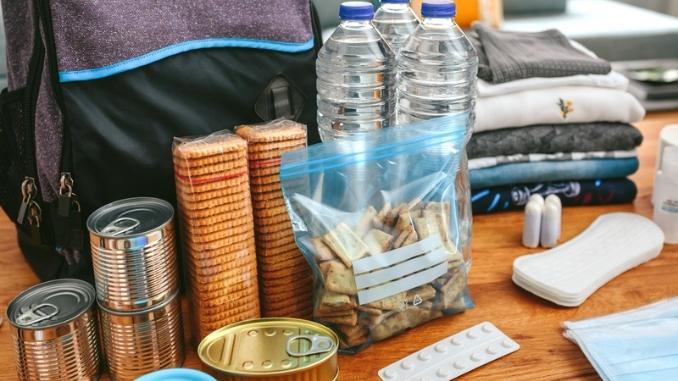
3. Light and Communication
The first thing to go in any emergency is usually the power. That takes away, light, heating and cooling, and your access to the news, Internet, and other sources of information. In an emergency, knowing what’s going on around you could save your life.
Include flashlights and other battery-operated lights you can use around the house, as well as several candles you can light and place around you. Then have a battery-operated NOAA weather radio that will keep you informed of important emergency information. Some of these include cellphone chargers, and some may be powered using a hand crank or solar panels.
Add extra batteries for all of your devices that need them, including extra battery charger packs for your phones and computers.
One last communication device that is very simple but very effective is a whistle, which can come in handy if you become trapped in your home.
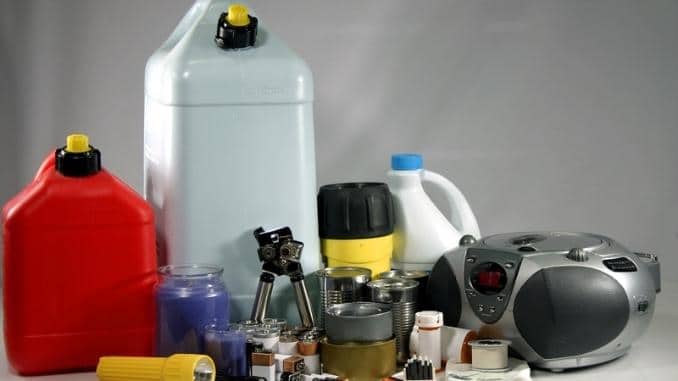
4. First Aid
In an emergency, you or someone close to you may be injured. An emergency first aid kit can help you address the injury immediately to keep it from getting worse.
Include bandages, compression bandages, gauze, ace bandages, CPR masks, soap, antibiotic ointment, antiseptic cleansing wipes, pain medications, allergy medicine, tourniquets, any needed prescription medications, kids’ medicines (if you have kids), hand sanitizer packs, first-aid tape, safety pins, a thermometer, tweezers, scissors, and vinyl gloves.
5. Medications, Medical Devices, Documents
If anyone in your family regularly uses prescription medications or medical equipment, keep at least a 7-day supply available for emergencies.
Then consider all your important documents and make copies of them to store in your kit or a safe nearby. These may include a list of medications and medical needs, the deed or lease to your home, birth certificates, insurance policies, photos of home items including serial numbers, and passports.
If your home is damaged, keeping these in a safe place can make it much easier to recover afterward. If you keep them inside the safe in a waterproof container, you can grab them easily if you need to evacuate.
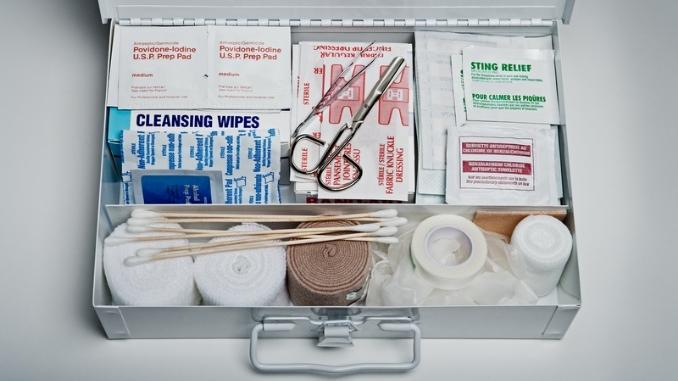
6. Emergency Contact Numbers
We’re all reliant on our cell phones these days, and may not remember the phone numbers of those people we call the most. Keep a list of all your important contact numbers in your kit, along with numbers for doctors, police, the fire department, and the poison center.
6. Clothing and Blankets
This isn’t something we normally think about, but in an emergency, you want to keep everyone warm and dry. Clothes can get dirty and wet during an emergency. Changing into fresh, warm clothes can make a big difference.
Include at least one set of extra clothes for each person, along with a reflective emergency blanket and extra blankets and sleeping bags. If you live in an area where fire, dust, or fumes may occur in an emergency, include face masks for everyone.
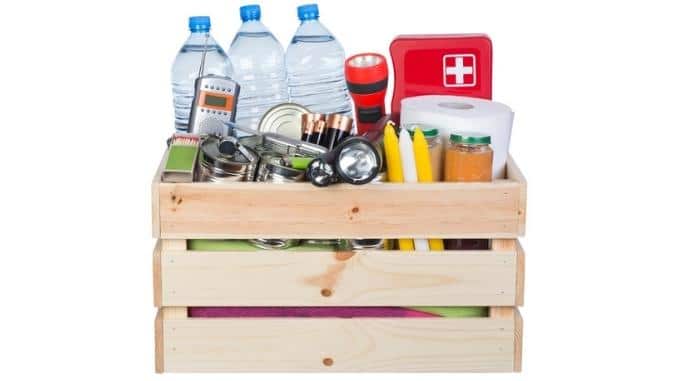
7. Hygiene Items
You may not think that brushing your teeth is important in an emergency, but feeling clean and comfortable can be reassuring, particularly in times of extreme stress. Keep toothbrushes and toothpaste, baby wipes, soap, other personal hygiene items, and garbage bags to help keep everyone feeling their best. It also helps to have paper towels and toilet paper available.
8. Various Tools
Depending on where you live and what you may encounter, it may help to have some additional tools in your kit. These may include a multitool or sharp pocketknife, hammer, screwdriver, axe, saw, collapsible shovel, rope, work gloves, matches, and duct tape. If you use an outdoor generator, have some extra gasoline available.
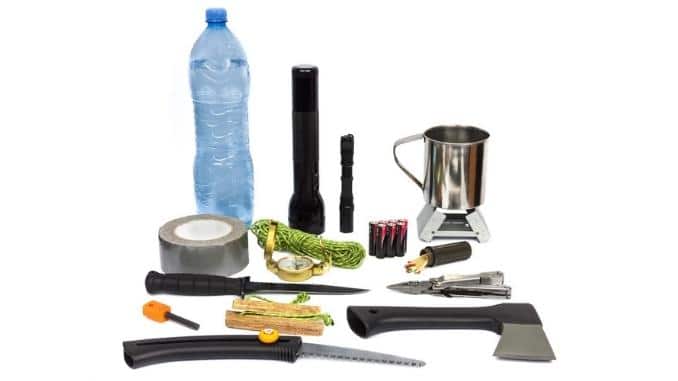
9. Entertainment Items
You and your family may have to stay in your home in case of an emergency. To keep everyone calm and happy, consider including board games, books, playing cards, a ball and gloves, paper and pencil or crayons, and other toys or entertainment items in your kit.
10. Extra Cash
In an emergency, you may not be able to get to the bank or gain access to the cash you need. Include small bills and coins in your kit to tie you over until things return to normal.
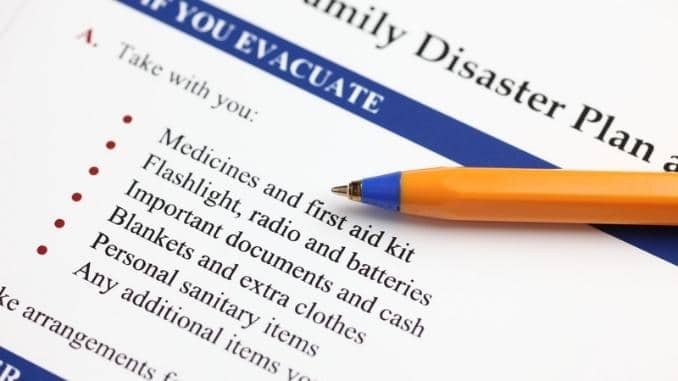
Maintain Your Emergency Preparedness Kit
Once you’ve built your kit and stored it, don’t forget to check it at least once a year to replace any expired items. You may also need to re-evaluate your family’s needs as time passes to make sure your kit is still complete.
With any hope, you’ll never need to use your emergency kit, but knowing that you are prepared for a disaster that might occur can provide tremendous peace of mind. No one wants to believe that their family will face such a situation, but the reality is that even one nasty storm can knock the power out for hours, or even days. Be sure to protect yourself and your loved ones by being prepared.
Any emergency situation can be stressful, and feeling stressed from time to time is natural. Prolonged stress, however, is extremely detrimental to your health. Learn key ways to decrease your stress and calm your body here.

